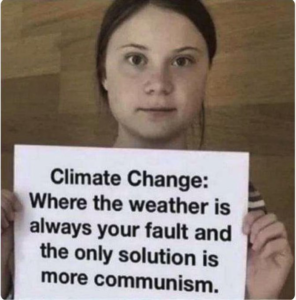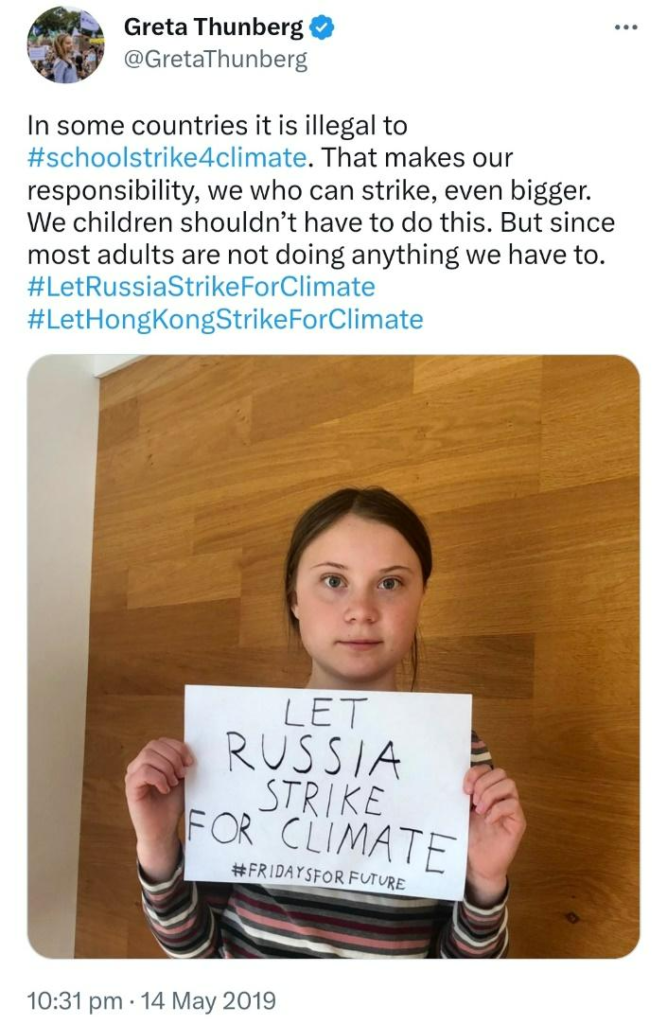Physical Address
23,24,25 & 26, 2nd Floor, Software Technology Park India, Opp: Garware Stadium,MIDC, Chikalthana, Aurangabad, Maharashtra – 431001 India
Physical Address
23,24,25 & 26, 2nd Floor, Software Technology Park India, Opp: Garware Stadium,MIDC, Chikalthana, Aurangabad, Maharashtra – 431001 India

Climate change has become an everyday topic globally today. We observe the effects of climate change in everything we pass through daily. The knowledge and awareness about climate change are increasing more than in the last several decades. People worldwide are discussing climate change and are ready to contribute to all efforts to combat it. These are manifestations of what they have seen and felt the effects of climate change.
The following posts have appeared on social media in the past few weeks. As a result, our team conducted an investigation on this. This article is based on fact checks of this post and interpretations received during our research.

Claim- { Climate change: where the weather is always your fault, and the only solution is more communism.}
The post appeared to make the above comment while carrying a banner by Greta Thunberg. She is a Swedish environmental activist. She conducts spreading various awareness about climate change among people. While this is the case, the posts circulating on social media are causing controversy, as she says the above mentioned opinion.
Fact check
According to the Climate fact checks investigation, it was found that the photo was fake and digitally altered. We found that with the help of Google’s reverse image system. Greta Thunberg posted this photo on Twitter on May 14, 2019, under the theme “Let Russia Strike for Climate #FRIDAYSFORFUTURE.” We found that the image of this post has been edited and changed by some people and is now being uploaded on Twitter.


Climate change is the truth, not a myth.
Climate change is an ongoing problem that will challenge the future. On the other hand, some politicians worldwide say climate change is a lie and a propaganda job to deceive the people. Even though much such thinking existed before year 2000, it has decreased now. Because people are seeing climate change events firsthand today. Similarly, climate change is also theorized to be a conspiracy of communism.
Climate change remains the most difficult, intractable political issue despite the evidence. Greenhouse gases have increased worldwide, bringing humanity ever closer to dangerous levels of global warming. Yet, as scientific evidence on the causes of climate change mounts and a consensus emerges within the scientific community, the public remains divided, and large, essential sections of the political class remain apathetic. As a result, we have trouble imagining the potential climate change catastrophe. We need help trusting governments to lead us to much-needed collective action. We need help defining the relationship between jurisdiction and accountability. And there is the problem of understanding the cause in the first place.
Next, let’s look at the scientific explanations for climate change.
Evidence that climate change is the truth
Earth-orbiting satellites and new technologies have helped scientists see the pictures of Earth and collect many different types of information about our planet and its climate worldwide. These data are collected over many years and reveal the signs and patterns of a changing environment.
Global Warming
In the mid-19th century, scientists demonstrated the heat-trapping nature of carbon dioxide and other gases. NASA uses several scientific instruments to study how these gases affect the movement of infrared radiation through the atmosphere. From the measured impacts of increases in these gases, there is no doubt that greenhouse gas levels will increase and warm the Earth. Here. Archived.
Earth’s global average temperature has increased by about 1.80C since the late 1800s, driven significantly by the increase of carbon dioxide in the atmosphere caused by human activities. Most of the warming occurred in the past 40 years, with the seven most recent years being the warmest. The years 2016 and 2020 are tied for the warmest year on record. Scientists start with temperature measurements taken at locations worldwide to calculate the global average temperature. Because their goal is to track temperature changes, measurements are converted from absolute temperature readings to temperature anomalies—the difference between the observed temperature and the long-term average temperature for each location and date.

The flattening of temperatures in the mid-20th century is explained by natural variability and the cooling effect of aerosols produced by factories, power plants, and motor vehicles during rapid economic growth after World War II. Post-war fossil fuel use also increased (5% per year), increasing greenhouse gas emissions. Aerosol pollution cools quickly.
All over the world, we observe various phenomena like melting ice glaciers, rising sea temperatures, rising sea levels, and sinking of islands into the sea. These are plausible examples of the effects of global warming.

Greenland and Antarctic ice sheets have decreased in mass and volume. According to data from NASA’s Gravity Recovery and Climate Experiment Program, between 1993 and 2019, Greenland lost an average of 279 billion tons of ice per year, while Antarctica lost 148 billion tons of ice per year. In addition, satellite observations reveal that the amount of spring snow cover in the Northern Hemisphere has decreased over the past five decades, and the snow is melting earlier. Here. Archived.
It is important to remember that climate change is a global issue that affects everyone, regardless of political beliefs. Moreover, the impacts of climate change, such as rising sea levels, extreme weather events, and food and water shortages, will have significant and potentially catastrophic consequences for all people, regardless of political affiliation. Therefore, it is essential to approach climate change as a shared global challenge that requires collective action and cooperation rather than a political issue to be exploited for ideological gain.
Climate change has become a highly politicized issue in many countries, with different political parties and interest groups having varying views on addressing it. For example, some political leaders and interest groups may deny the reality of climate change. In contrast, others may emphasize different approaches to tackling the problem, such as market-based solutions versus government regulation.
The politics surrounding climate change can also vary between countries. In some countries, climate change is a highly contentious issue that can influence elections and public policy, while in others, it may not receive as much attention.
There are also international politics regarding climate change, such as negotiations over emissions reduction targets and funding for climate change adaptation and mitigation efforts. These negotiations can be complex and sometimes contentious, with countries holding different priorities and perspectives. Ultimately, the politics of climate change reflect the broader political and economic importance of other countries and interest groups. However, it’s essential to recognize that climate change affects all nations and people. Therefore, addressing it will require cooperation and collaboration across political and ideological divides.
There have been several international agreements and conventions aimed at addressing climate change, including:
In addition to these global agreements, many countries and regions have implemented climate change policies, such as carbon pricing, renewable energy targets, and energy efficiency standards.
The United Nations Sustainable Development Goals (SDGs) include a specific goal on climate action, which is Goal 13: “Take urgent action to combat climate change and its impacts.” The targets associated with this goal include:
These targets reflect the urgent need for action on climate change, as well as the importance of addressing the impacts of climate change on vulnerable communities and ensuring that developing countries have the resources and support they need to mitigate and adapt to climate change. The SDGs provide a framework for international cooperation, action on climate change, and other important social, economic, and environmental issues.
Therefore, it is a matter of concern that when the world takes various measures for the danger caused by climate change, such political work will lead people astray.
At the heart of the issue is that reducing greenhouse gas emissions, which are the leading cause of climate change, requires significant changes in energy systems, transportation, agriculture, and other sectors of the economy. These changes can have substantial economic impacts, and some groups, such as fossil fuel companies, may resist efforts to transition to cleaner energy sources.
In addition, climate change is a global issue that requires cooperation and coordination among nations, each with its priorities and interests. Negotiations around international climate agreements can be highly politicized, with countries jockeying for position and trying to protect their economic interests.
Furthermore, climate change has become a highly polarizing issue in some countries, with politicians and political parties denying the science behind climate change or resisting efforts to take action. This has further politicized the case, making it challenging to build the broad-based support needed to address climate change effectively.
Despite these challenges, many political leaders and groups are committed to addressing climate change and working towards a more sustainable future. However, as with many complex issues, multiple perspectives and interests are at play, and finding a path forward will require ongoing engagement and collaboration across political lines.
Overcoming climate change is a complex and ongoing process requiring sustained effort over many decades. While progress is being made, there is still a long way to go to meet the global goals of limiting warming to well below two °C above pre-industrial levels and pursuing efforts to limit warming to 1.5°C.
The speed and scale of action needed to address climate change require significant changes in energy systems, transportation, agriculture, and other sectors of the economy. These changes will take time and require substantial investment in research and development, infrastructure, and policy changes at the local, national, and global levels.
Over many decades, overcoming climate change will require sustained effort and commitment, but there are many reasons to be hopeful about the future. Building a more sustainable and resilient world for future generations is possible with continued collaboration and action.
If you have any queries or come across suspicious content related to climate change or the environment and want us to verify them for you, then send them to us on our WhatsApp hotline: +917045366366
With inputs from Dinesh Balasri –